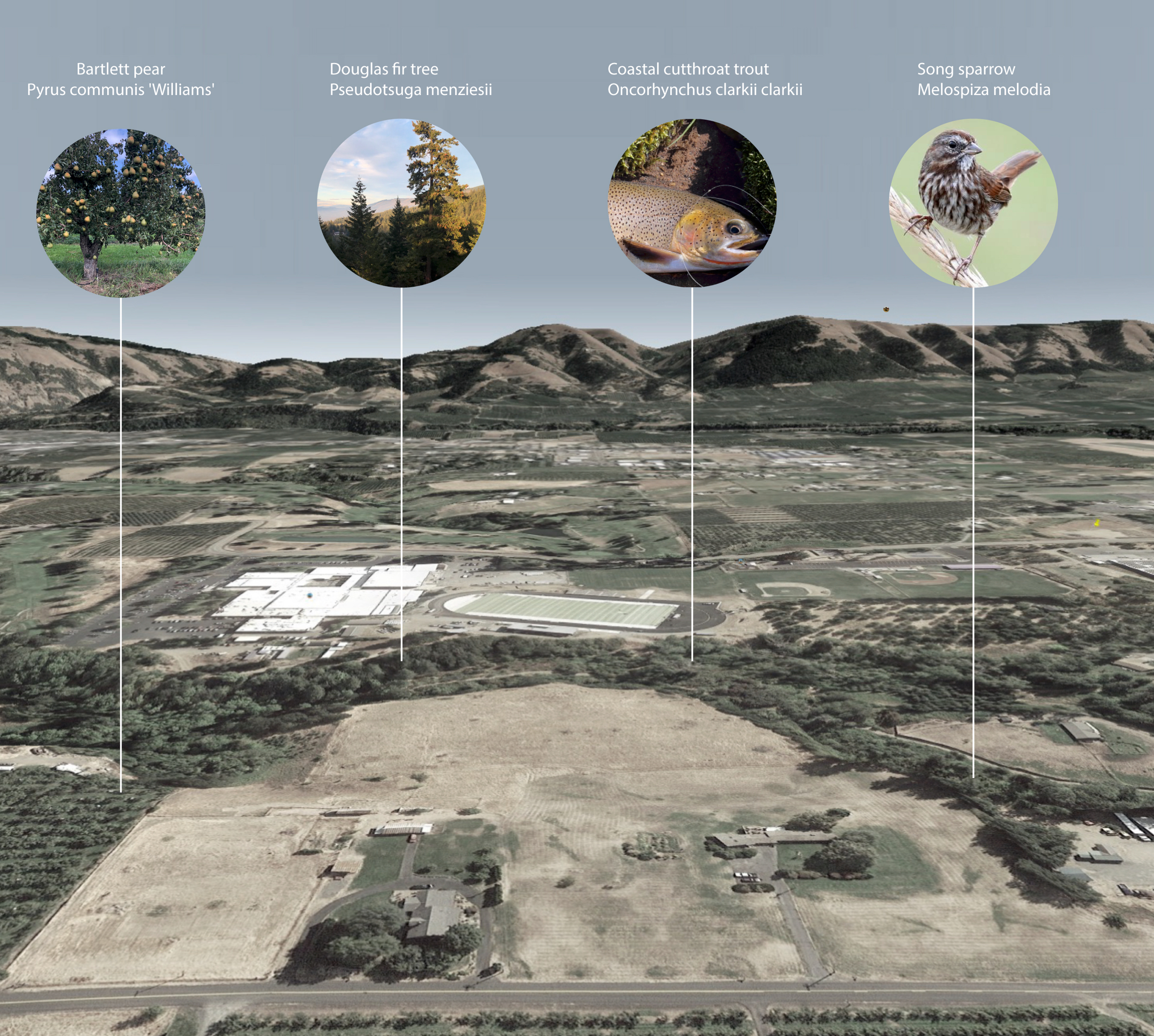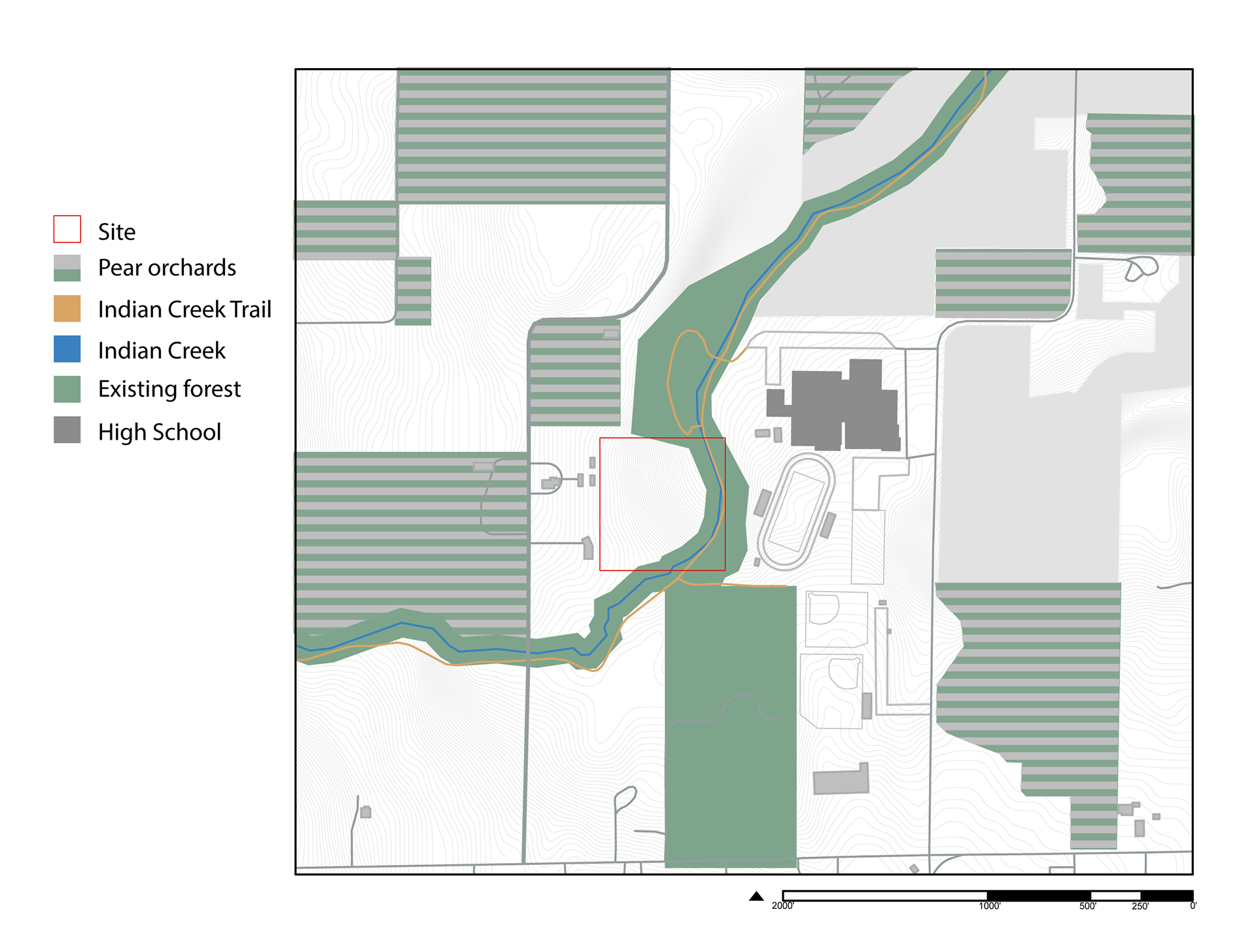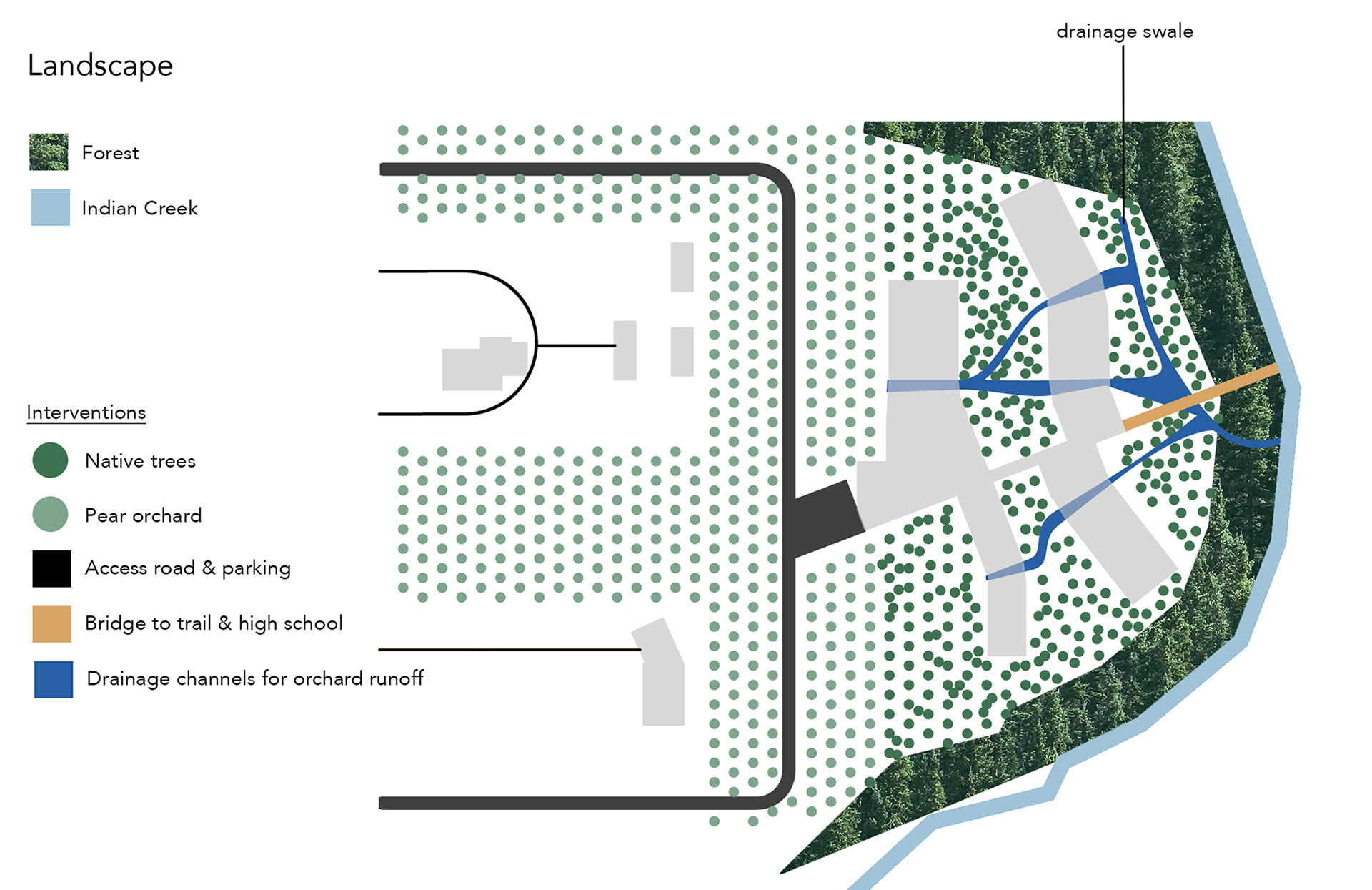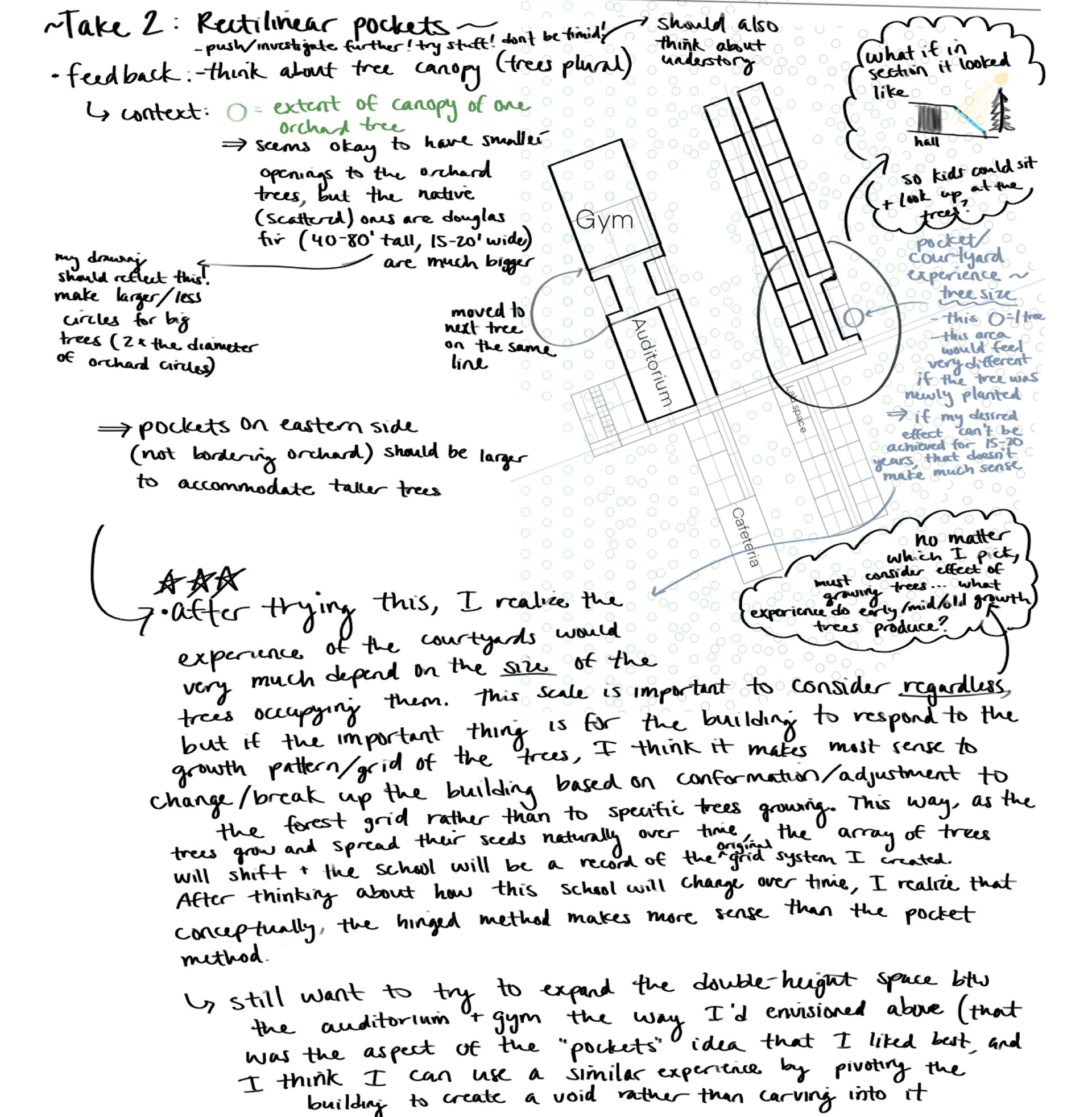Both images drawn using Rhino, Illustrator and Photoshop
Used Grasshopper script to generate tree locations: Rigid rows to the east and increasing randomness moving west.
SITE ANALYSIS AND LANDSCAPING INTERVENTIONS
This site was chosen because of its proximity to the local high school and interesting ecological history. Indian Creek historically conveyed water to nearby orchards and supplied trout fishing opportunities for local fishermen. As urban development increased over the past 30 years, the health of the creek and its wildlife waned.
The landscaping is designed to meet the 4 goals of the Hood River Watershed Action Plan: improve habitat diversity; increase shade around the creek; decrease stream temperatures; and decrease pollutants from orchard runoff entering surface waters.
The school is set back from the water’s edge to make room for new native vegetation, which will be planted to surround the east side of the building. In the process of planting this new forest area, invasive species will be removed, nurturing biodiversity. Increasing the forest density around the creek will increase shade over the water, reducing its temperature. While Hood River community members are currently focusing their efforts on teaching local farmers strategies to limit runoff from their orchards, the Indian Creek School will also have its own orchard so students and other locals can learn to limit harmful ecological impacts of growing pears.



DRAINAGE SYSTEM
Runoff from the orchard flows through drainage channels that run beneath the school’s hallways, eventually feeding into Indian Creek. Sloped roofs funnel rainwater towards rain chains which convey water from the roof's collection points to the drainage channels below.
Hinge section 1: cafeteria seating
Hinge section 2: dismissal and gathering
Central hallway section
FORM-FINDING PROCESS

Process: form-finding to create liminal covered gathering spaces
